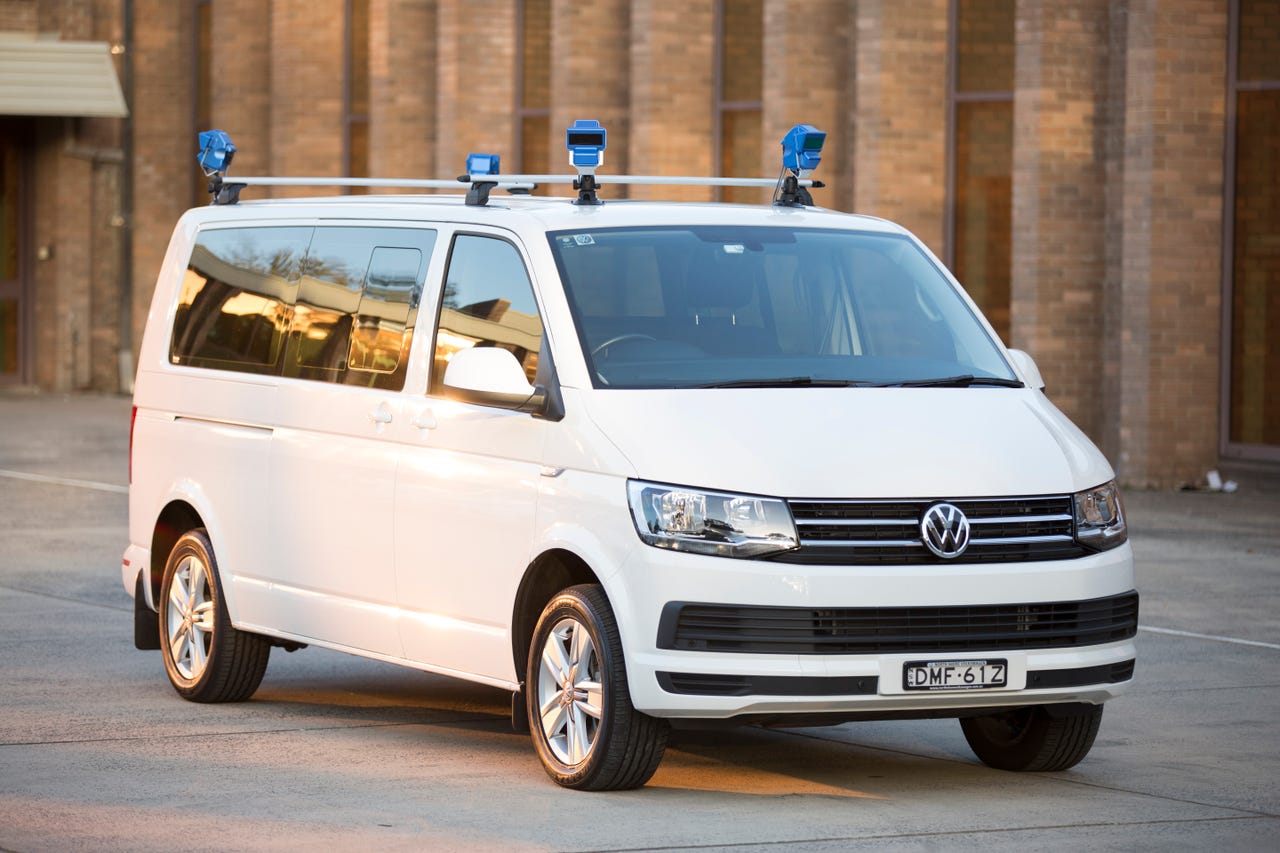Australia's Baraja takes on Uber with autonomous vehicle lidar play


Baraja sensor-mounted vehicle
Australian startup Baraja is giving car manufacturers an alternative to the 13kg drum Uber is using for driverless vehicle mapping, launching its Light Detection and Ranging-based solution to help progress driverless vehicles.
The product, Spectrum-Scan, uses shifting wavelengths of light to create "eyes" for autonomous vehicles. CEO and co-founder Federico Collarte told ZDNet the lidar solution solves the scalability, reliability, and performance issues that have "challenged automakers, rideshares, and the tech behemoths as they race toward a fully-autonomous future".
At this point, it doesn't matter what type of vehicle the sensors are mounted to, as Collarte said "today you don't buy self-driving cars, you buy cars and you give them self-driving capabilities".
Up to four sensor heads are connected via fibre optic cable to a central processor.
The "eyes" can be exposed to the elements, while the "brain" is well-protected, Collarte added.
"These eyes contain basically pieces of glass, prism-like optics, lenses, etc -- they're almost completely passive meaning they don't have any active electronics," he explained. "That allows them to be mounted in positions that other lidars wouldn't be able to."
Currently an after-market fit, Collarte said Baraja is working with vehicle manufacturers that are keen to integrate the sensors into the build of future vehicles.
The sensors scan both vertically and horizontally giving a composite 360 degree view of the car's surrounds -- in real-time. The information is gathered and displayed in the Point Cloud.
Baraja Point Cloud render
"Every pixel is a position where we've shot our laser to ... accurately determine the distance to the object," Collarte continued.
The Point Cloud also shows intensity of the objects, differentiating between walls, other vehicles, pedestrians, and trees, for example.
According to co-founder and CTO Cibby Pulikkaseril, autonomous vehicles of the future will use many different sensors; they'll have cameras, radar, and lidar. So for the autonomous vehicle to really understand the world around it, they need all of those inputs together, he said.
"The advantage of lidar is night or day it works," Pulikkaseril told ZDNet.
"What we're making is the laser eyes of the self-driving cars," Collarte added.
Baraja was formed in 2015 in a garage in Sydney. Backed by investors such as Sequoia and Blackbird, Baraja now boasts a presence in San Francisco in addition to Sydney -- based out of the CSIRO -- with plans to expand into Europe and Asia, too.
"We wanted to start working with research institutions to really collaborate for the next and the next generations, so we were very lucky that CSIRO was welcoming to us, gave us space ... we moved in, started working on our proof-of-concept prototype," Collarte told ZDNet.
"We have been very engaged with the best self-driving teams around the world from the beginning. All of last year, three iterations closely aligned with the self-driving teams around the world.
"In the space of a year we've come up with a product we're ready to launch."
According to Pulikkaseril, lidar is a difficult tech to master.
"It's been around for a while but what people use today is pretty insufficient for autonomous vehicles," Pulikkaseril said, pointing to Uber's $75,000 rotating drum lidar offering. "They needed all of this because the resolution that they could get with that set of sensors is not nearly as dense as our Point Cloud.
"They have enormous reliability problems with these things; they break often because they're spinning, if they get wet they'll short out ... customers we've spoken to know that's not the way of the future."
"Self-driving vehicles are coming, but the hindrance for them entering the market and becoming a reality was they couldn't do it because they didn't have laser eyes that were good enough," Collarte added.
RELATED COVERAGE
- BMW's solid-state LiDAR offers a glimpse of the future of autonomous vehicles
- Moving from planes, trains, and automobiles to 'mobility-as-a-service': A peek into the future of transport in Sydney
- Autonomous shuttle buses become the new Las Vegas wedding venue
- Ford's self-driving cars to become Miami's new pizza delivery guy
- Nvidia redefines autonomous vehicle testing with VR simulation system
- Nvidia CEO: Give Uber a chance to explain driverless car incident
- Could thermal sensors have prevented Uber's fatal crash?
- Uber's driverless cars said to lag behind competitors (CNET)
- Will human drivers always be the weak link when sharing the road with autonomous vehicles? (TechRepublic)
- Transportation tech such as autonomous vehicles and dockless bikes critical to Austin, Texas (TechRepublic)